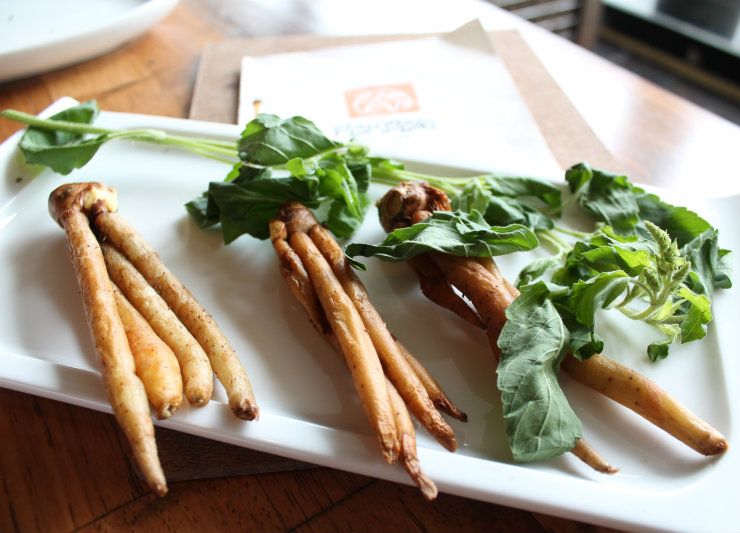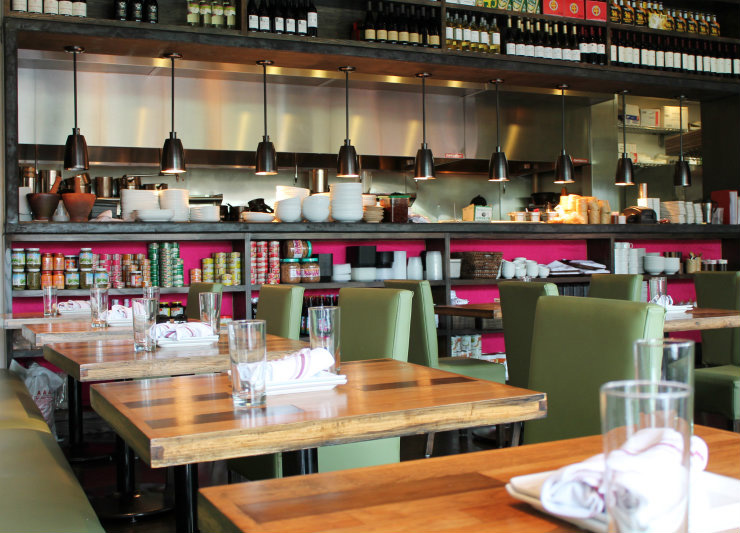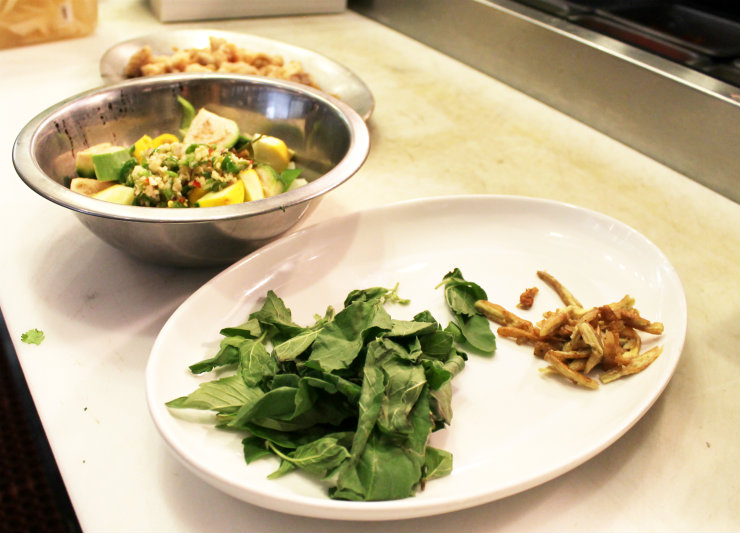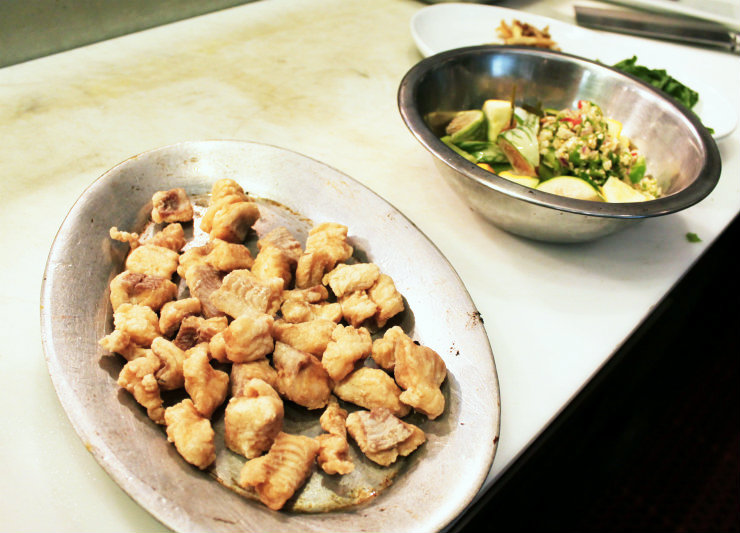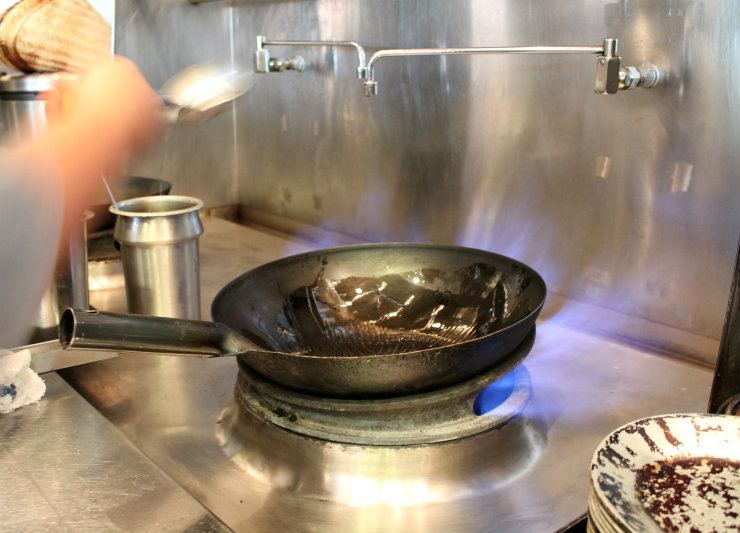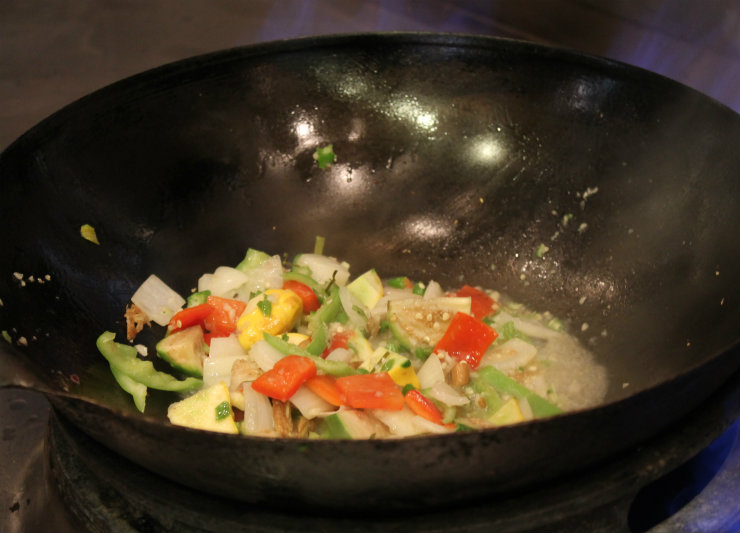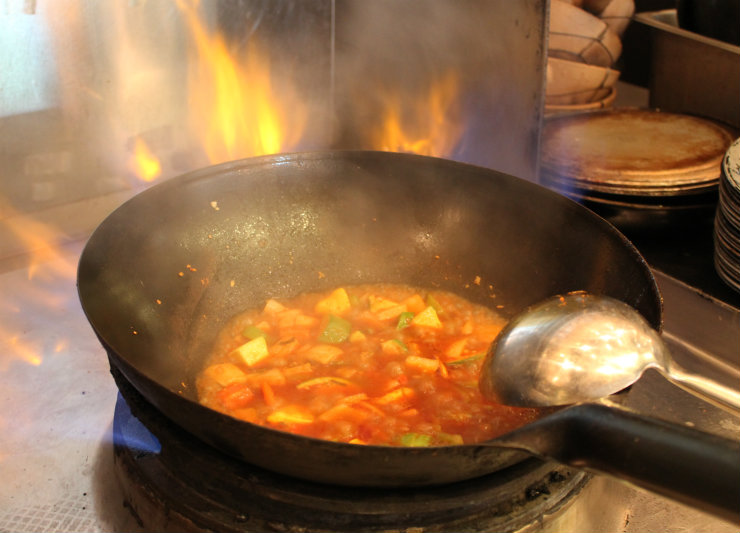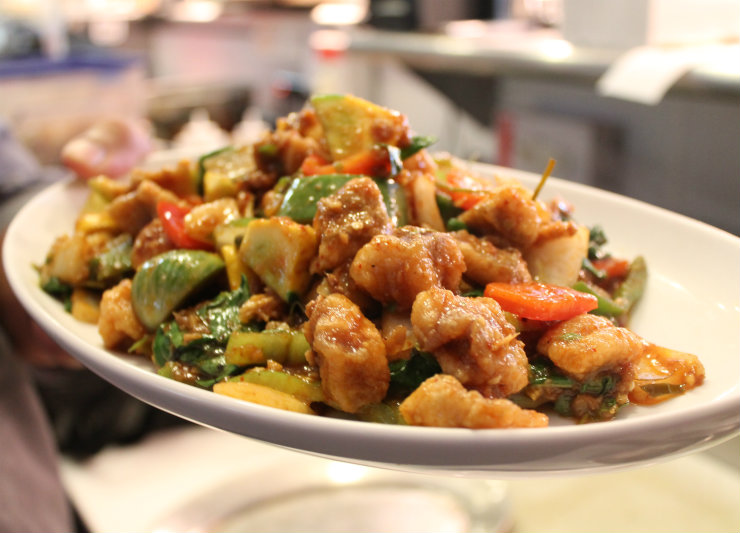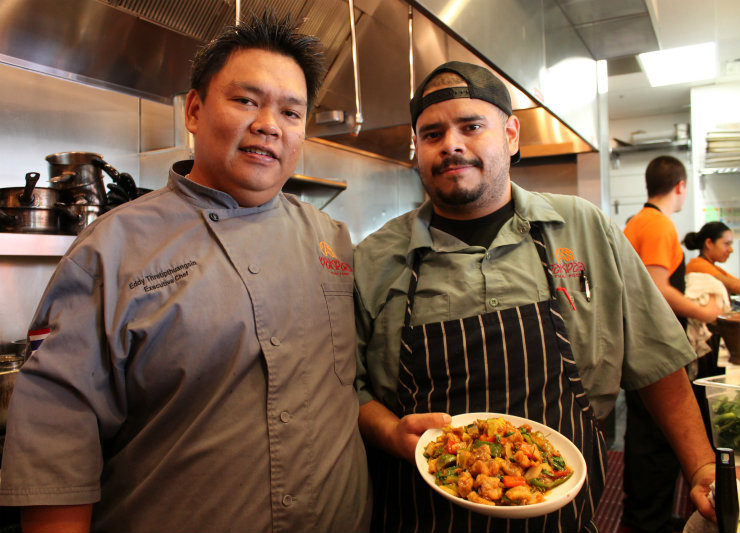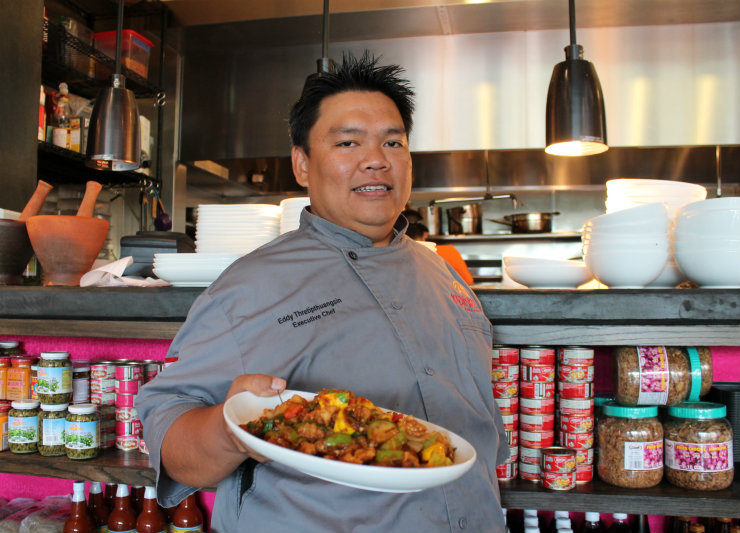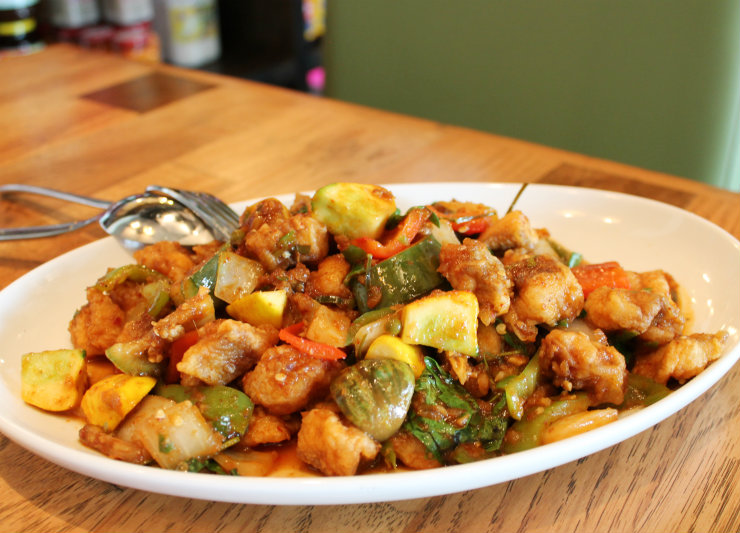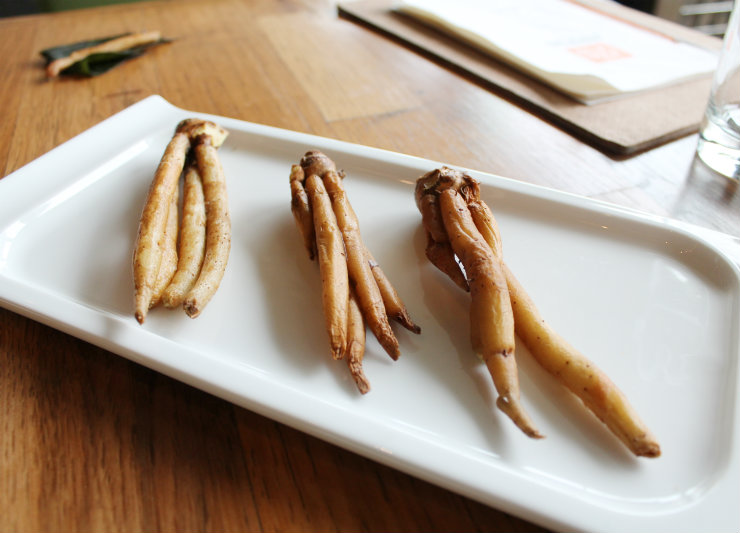Pakpao's Eddy Thretipthuangsin Gives Us The Skinny on Fingerroot and Holy Basil.
Welcome to Wild Things, where we dive into the kitchen of some of Dallas' most daring chefs to find out what wild, interesting ingredients these food artists are playing with. Whether it's a taboo ingredient or just a food item you wouldn't think you'd find at a certain establishment, it's about time someone highlighted the unconventional or unexpected. Here, we invite you to open your mind — and your mouth — to the wild things in Dallas.
This week, we highlight two lesser-known ingredients traditionally used in Thai cuisine. These ingredients may look like foods you're probably familiar with, but they pack a very different flavor than their well-known counterparts.
Below, Thailand native and executive chef Eddy Thretipthuangsin of the new, popular Design District eatery Pakpao tells us about the wildest things in his kitchen.
What is the wildest ingredient in your kitchen?
The wildest ingredients will probably be the fingerroot and the holy basil. The [fingerroot] literally looks like a finger. The name of it is actually fingerroot, but a lot of chefs or some other people may refer to it as wild ginger. And you can't find holy basil at the stores, anywhere.
What do they taste like?
Even though [the fingerroot] is a wild ginger, it doesn't taste like ginger at all. It still has that spice, that heat element, but it's different. It's really hard to explain. It smells different — it has that spice but it has a floral flavor. It has a subtle flavor. There's really nothing to compare it to.
Holy basil is very intense. Holy basil is like Thai food 101; this is what I grew up eating. But when you go to a Thai restaurant and they use [Thai basil], I go “that's not pork basil.” It doesn't taste the same. It doesn't taste like anything that we know. It might be close to the Italian sweet basil, but it's not the same. The aroma is close to the Italian sweet basil, but the flavor is a lot more intense — like cinnamon basil, kind of.
Why did you decide to feature these wild ingredients?
The main Thai ingredients that we use that most Thai restaurants probably don't use are holy basil, fingerroot and the yanaang leaf. Holy basil has limited availability and supply and the shelf life for it is very short — like two days. So, economically, some people decide to take a shortcut because it doesn't make sense. But, for me, we are fortunate and I've been able to sort it out with our supplier that we get holy basil in every other day. I get them in from all over the place — from Hawaii and other places. But, again, a dish [that features this ingredient], like the ground pork basil, without the holy basil, it's not the same dish. A lot of Thai restaurants use that name, but they use Thai basil, not holy basil. But, if you go to Thailand, it's all holy basil, not Thai basil. Holy basil is an essential [ingredient]. You need it.
I think a lot of people don't know fingerroot and it's actually one of the main, key elements that we use in a lot of our curry. Nobody ever sees it in a raw form because a lot of time it’s blended in, it's made in a curry. One of the things that we do in one of our dishes, our crispy fish curry, is we add fingerroot to the dish. We slice [the fingerroot] really thin. So, when you consume it, when you taste it, you get that flavor. Y'know, it's a little heat, but it's subtle heat, [and] it also brings everything together. It's adding another depth to the dish. When we use [fingerroot] in the dish, it's not the main ingredient, but it's there to kind of bring everything together.
What makes having these items in your kitchen special?
I'm always a big fan of when I make a dish, the guests have it and they can't figure out what [flavor] it is — but in a good way, like a mystery ingredient. Everything we put on a plate is there for a reason. These ingredients add more complexity to the dish. Thai cuisine is all about complex flavors. These ingredients add a new element, a new depth of complexity. I would say 9.5 out of 10 Thai restaurants in Dallas don't use holy basil. You're not going to find [these] ingredients in most places.
Fresh fingerroot. Thretipthuangsin broke off a piece of the root for me to try. The flavor is earthy, spicy and floral. The aroma or flavor of fingerroot doesn't compare to common ginger.
Fresh fingerroot with holy basil. Despite looking like common basil, holy basil has a deep flavor that tastes like a mix of spearmint and basil. Thretipthuangsin said the holy basil he has in stock right now is from Florida. When he was getting holy basil from Hawaii, the leaves were smaller and more flavorful, with tones of anise and spice — more like the holy basil from his home country.
A look into the open kitchen from the dining area at Pakpao. Thretipthuangsin said storage space is limited, so a lot of the pantry items are on display.
Thretipthuangsin gathered ingredients to prepare his crispy fish curry. Holy basil, Thai basil and sliced fingerroot sit on one plate while bamboo shoot, Thai apple eggplant, yellow squash and kaffir lime leaf, garlic and other vegetables rest in a bowl.
Crispy catfish, which Thretipthuangsin coated in rice flour and fried.
Thretipthuangsin get an extremely hot wok ready for the curry.
Thretipthuangsin throws the vegetables for the crispy fish curry in the wok.
After adding chili paste, red curry and crispy fish, the curry cooks and expels smoke in the blistering hot wok.
A close up the finished dish.
Executive chef Eddy Thretipthuangsin and sous chef Rudy Mendoza with their Pla Douk Pad Phet (or Crispy Catfish with Red Curry) dish, $14.
Executive chef Eddy Thretipthuangsin with his dish at Pakpao.
Crispy catfish with red curry, holy basil and fingerroot.
